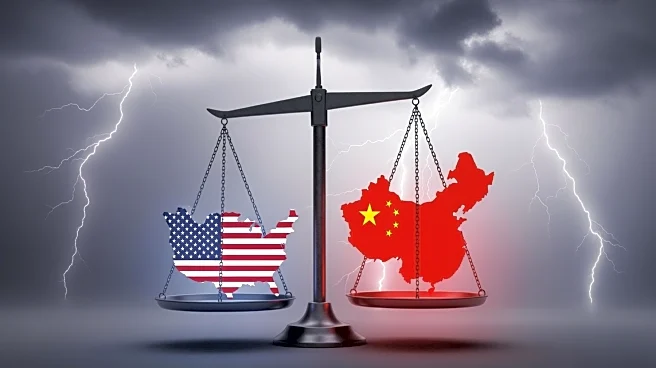What's Happening?
A potential trade agreement between the United States and Canada concerning steel, aluminium, and energy is reportedly close to being finalized for signing at the upcoming Asia-Pacific Economic Cooperation
(APEC) summit in South Korea. The deal, involving Prime Minister Mark Carney and President Trump, aims to resolve ongoing tariff disputes initiated earlier this year when the U.S. imposed tariffs on Canadian steel, aluminium, and automobiles. In response, Canada retaliated with similar measures. The negotiations have focused on lifting these tariffs, with Canada likely to accept quotas on steel in exchange for reduced U.S. tariffs. However, critical minerals are not part of the current discussions, and the U.S. remains unwilling to negotiate on Canadian automobiles or softwood lumber.
Why It's Important?
The potential trade agreement is significant as it could ease tensions between the U.S. and Canada, two major trading partners, particularly in the steel and aluminium sectors. The tariffs have strained relations and impacted industries reliant on these materials, leading to increased costs and uncertainty. A resolution could stabilize prices and supply chains, benefiting manufacturers and consumers in both countries. Additionally, the agreement may set a precedent for future trade negotiations, influencing how the U.S. approaches trade disputes with other nations. The deal's success could bolster economic ties and cooperation between the U.S. and Canada, fostering a more collaborative approach to international trade.
What's Next?
If the trade deal is signed at the APEC summit, it will likely lead to immediate changes in tariff structures, providing relief to affected industries. Stakeholders, including businesses and trade associations, will closely monitor the implementation of quotas and tariff adjustments to assess their impact on operations and profitability. Political leaders in both countries may face scrutiny over the concessions made during negotiations, particularly regarding the exclusion of critical minerals and the lack of progress on automobile and softwood lumber tariffs. The agreement could also influence upcoming trade discussions with other countries, as the U.S. continues to navigate complex international trade dynamics.
Beyond the Headlines
The trade deal's implications extend beyond immediate economic impacts, potentially affecting geopolitical relations between the U.S. and Canada. The resolution of tariff disputes may enhance diplomatic ties, fostering a more cooperative environment for addressing other bilateral issues. Additionally, the agreement could influence global trade policies, as other nations observe the U.S.-Canada negotiations and consider similar approaches to resolving trade conflicts. The focus on steel and aluminium highlights the importance of these industries in national security and economic stability, prompting discussions on the strategic management of critical resources.











